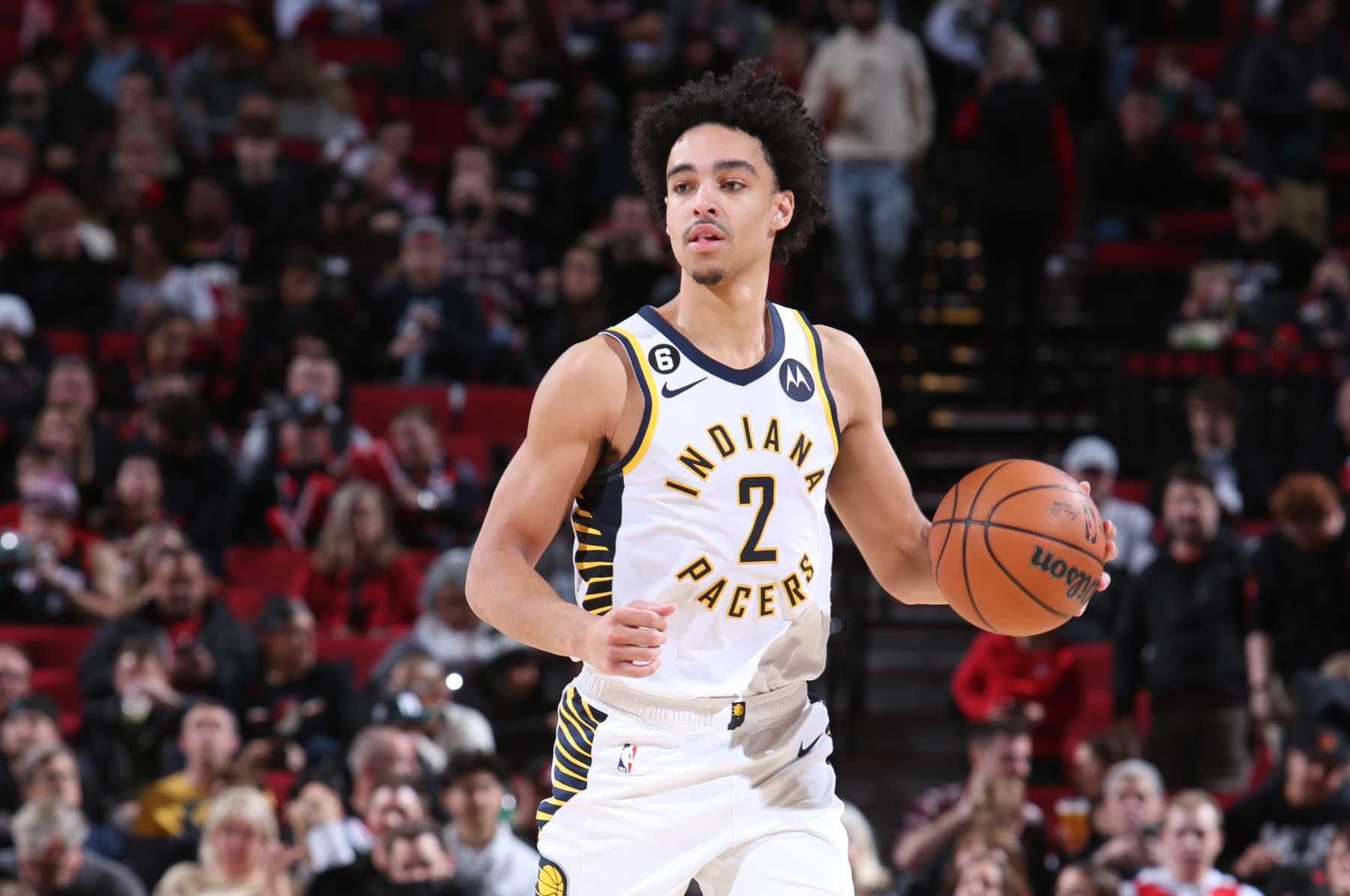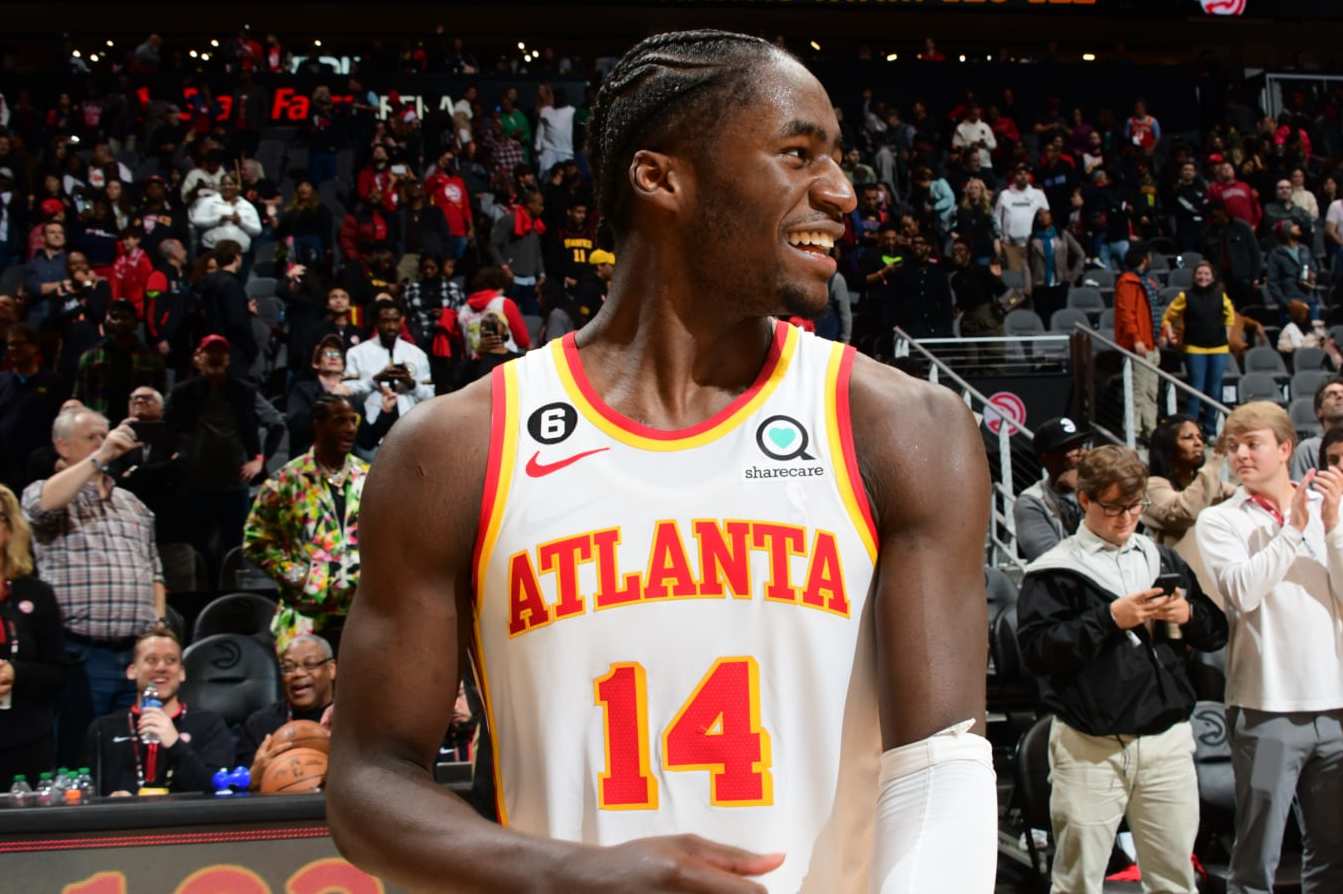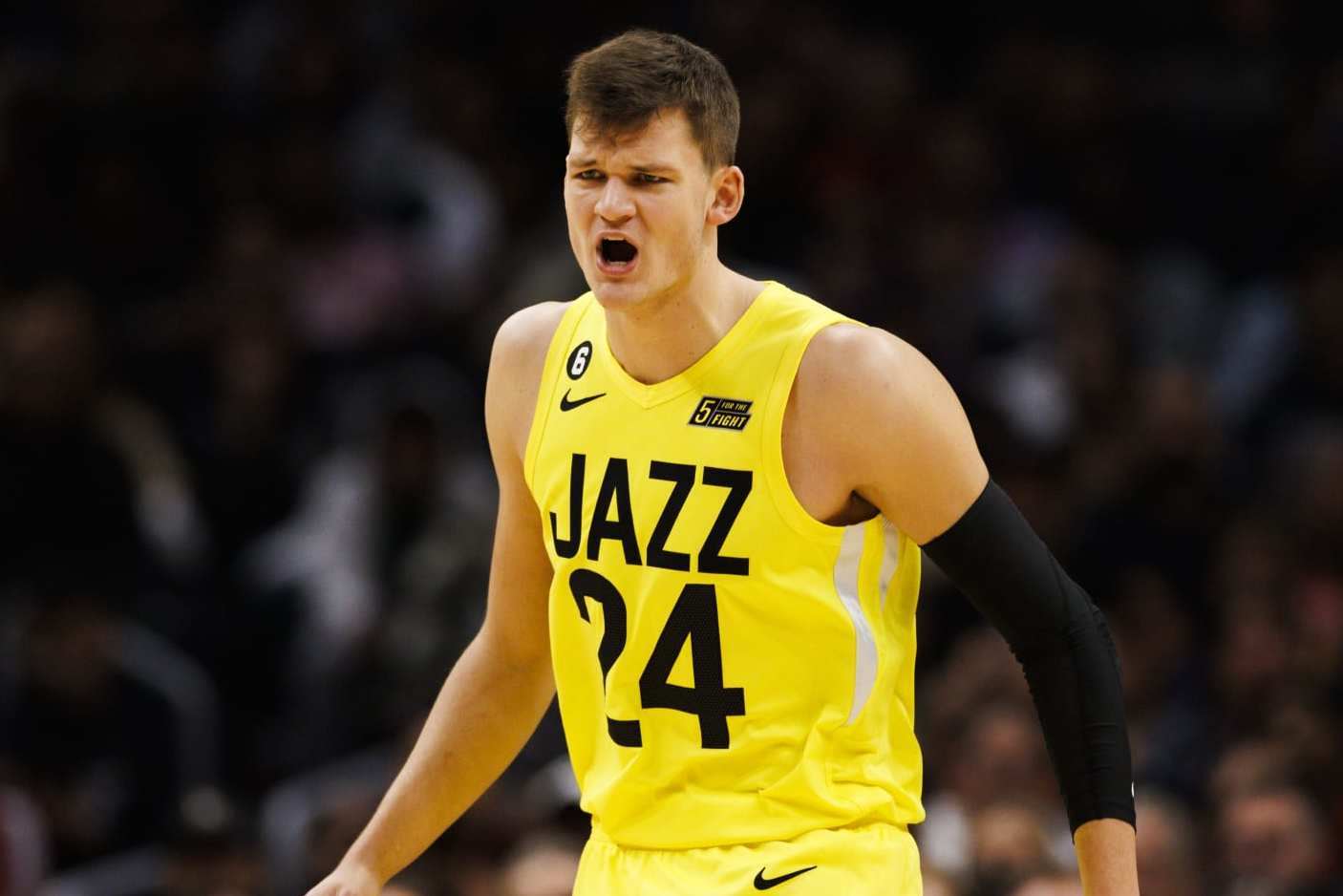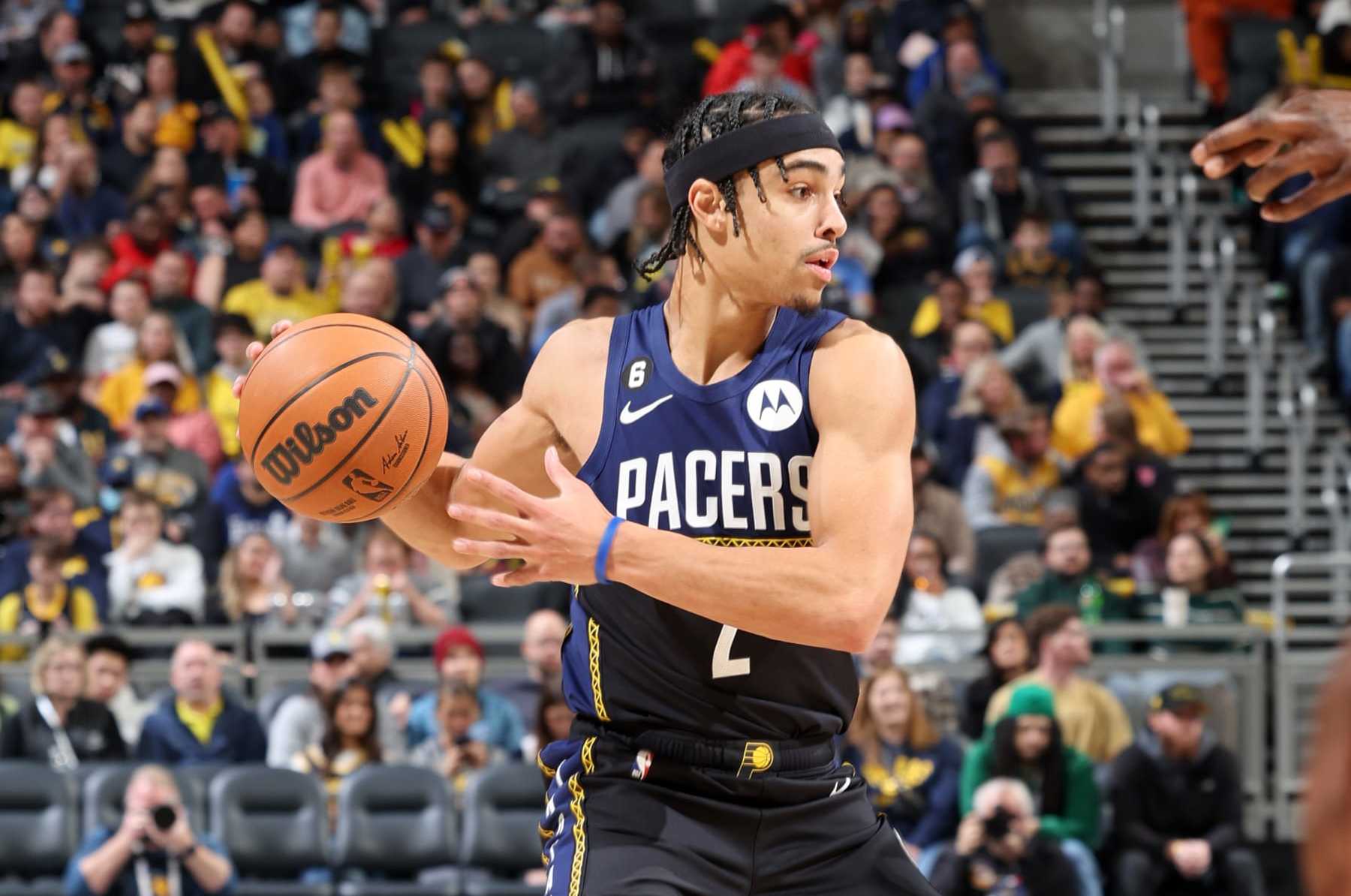2022 NBA Rookies Who Already Look Like Draft Day Steals
2022 NBA Rookies Who Already Look Like Draft Day Steals

Anybody can identify talent at the very top of the NBA draft, but it takes real vision to find a difference-maker outside the first 10 picks. And, if we're being honest, luck is a factor too.
Dogged scouting and shrewd foresight don't mean much unless a handful of teams ahead of you bungle the process and let a prized prospect slip through the cracks. The draft is a zero-sum game, and one team's come-up often depends on another's screwup.
We won't point fingers here. Instead, we'll keep it positive by celebrating the 2022 rookies who've already outperformed their draft slots and, more importantly, look like keepers. These are guys selected outside the top 10 who appear destined to beat the odds; loads of data show that picks after that cutoff are unlikely to become long-term starters. Beyond the lottery, chances of finding a rotation player further diminish.
Early returns suggest everyone here is on track to return far more value than their draft slots have historically been worth.
Through roughly a third of the season, these are 2022's draft-day steals.
Jalen Williams, Oklahoma City Thunder

Jalen Williams is the highest selection we'll cover. The No. 12 pick out of Santa Clara is easily the best NBA player from that school since Steve Nash, though the bar's low on that account. There's only been one other Bronco in the league since the two-time MVP turned pro in 1996: Marlon Garnett, who played with Nash in college and logged 24 career NBA games.
Williams was a fast-riser in the run-up to the draft. As teams watched the 6'5" wing handle and shoot during workouts, it got easier to envision him occupying the coveted two-way wing slot. His 7'2" wingspan and advanced court sense didn't hurt, either. Even if his offense lagged, it was quickly clear he'd be a factor on the other end.
Jalen Williams hounding Trae Young pic.twitter.com/LzqMZZ0b08
— buddhaball🏀 🍉🇺🇦☸️ (@SiddharthNBA) December 6, 2022
Through his first 23 professional games, the 21-year-old has started 10 contests and averaged 10.9 points on 52.8 percent shooting. The long ball hasn't been there yet, but Williams' 28.6 percent three-point hit rate will rise.
He shot 39.6 percent on 106 deep attempts in his last collegiate season and hit 80.9 percent of his free throws. Williams is making 75.6 percent of his foul shots for the Oklahoma City Thunder.
It's the rookie's work at closer range that really stands out. Williams is converting 62.8 percent of his two-pointers, including a stellar 75.8 percent of his shots inside three feet. He has a variety of finishes and is adept at changing tempo to throw defenders off balance.
This Jalen Williams drive (and of course it's a lefty finish) pic.twitter.com/I4XjYmrjUa
— Rich Stayman (@RichStayman) October 12, 2022
Better still, Williams already knows how to use his strong frame, seeking contact and finishing through it.
His body control and patience when attacking are highly advanced for a first-year player, and he's sneakily quick out of a triple-threat position. Add all that, and Williams' ability to attack is his defining skill.
It has also contributed to his ranking as the most efficient high-volume scorer among rookies. His 59.5 true shooting percentage is the best of any first-year player who's attempted at least 190 shots.
Imagine what that number will look like when Williams inevitably becomes at least a league-average three-point shooter.
Oddly, it's still tough to tell what role Williams will ultimately fill. That's a good problem because it stems from his obvious ability to function as a lead ball-handler and facilitator. A year from now, it's possible we'll think of him as an oversized point guard who can defend forwards. OKC has already trusted him to run the offense late in games.
Jalen Williams @JdubPSCEO was phenomenal down the stretch of the Thunder/Wolves game.
— Andrew Schlecht (@AndrewKSchlecht) December 5, 2022
He went into the 4th quarter with 0 points and 0 assists
Finished the game with 11 points, 3 assists
He was initiating offense during the critical moments of the game and delivering pic.twitter.com/hjtKu4JYhf
The Western Conference Rookie of the Month for October and November, Williams is just getting started.
AJ Griffin, Atlanta Hawks

Picked 16th out of Duke, AJ Griffin already has a pair of game-winners on his NBA résumé. Even without them, he'd rate as one of the best draft values so far.
Like Williams, who came off the board four picks ahead of him, Griffin boasts a coveted "big wing" frame that he understands how to use. Though mostly known as an ace three-point shooter in college, the 6'6" forward is comfortable throwing his body into defenders and finishing with force.
Hell of a fake to attack the closeout and finish with strength/balance by AJ Griffin pic.twitter.com/l9yO3UKHMs
— Charlie Cummings (@klaytheist11) October 8, 2022
Griffin doesn't do much work near the bucket, as less than 10 percent of his attempts have come within three feet. But as he develops his off-the-dribble game and increases his close-range attempts, he'll be a problem for defenses. Even at low volume, he's been unbothered by physicality, ranking in the 93rd percentile among wings as a finisher when fouled.
Though partly because of injuries, Griffin has started every game he's played for the Atlanta Hawks in December, and he's averaging a solid 14.0 points per contest this month.
That level of production should be viewed as a floor, as Griffin still hasn't come anywhere close to replicating the marksmanship he showed in college. At 33.3 percent from deep, he's a long way from the 44.7 percent he drained at Duke.
It's true that Griffin's form is funky, notable for his unusually wide-set feet. But the results were so good in college that it's hard to believe he won't heat up soon. His touch on floaters, comfort on mid-rangers and craft around the bucket just scream "born scorer."
Plus, the 19-year-old Griffin is the third-youngest player in the NBA. He's got plenty of time to find his stroke.
When he does, he'll settle in as a high-end starter for at least a decade—exceptional value for a player taken outside the lottery.
Tari Eason, Houston Rockets

Tari Eason may not have the high-end-starter, potential-All-Star ceiling of Williams or Griffin, but the No. 17 pick leads both of them in box plus/minus and ranks second among all rookies in that catch-all metric.
The combo forward has yet to start a game for the Houston Rockets and doesn't earn recognition for his scoring (8.5 points per game on 43.1 percent shooting), but he's already one of the league's most disruptive defensive players.
The numbers that show he ranks in the 100th percentile among forwards in steal rate and the 84th percentile in block rate help tell the tale, but the real story is in the film.
Eason is an absolute menace on the ball, one of those rare shutdown types who seems to know what the offensive player is going to do before he does it. It's almost like a mirroring effect; the ball-handler shifts one way, and Eason moves at exactly the same time. The word "clairvoyance" comes to mind.
And good luck losing him on a screen. Some guys trail and catch up after getting clipped by a pick, but Eason just stays attached the whole time, producing embarrassing results for the offensive player who foolishly thinks he's in the clear.
tari eason update: still ridiculously ridiculous pic.twitter.com/tfbCUIOEOy
— Dan Favale (@danfavale) December 9, 2022
The off-ball havoc Eason wreaks also shows up in the numbers. Among players who've logged at least 500 minutes, only Alex Caruso and De'Anthony Melton average more deflections per 36 minutes. And though his scoring is mostly a throw-in, Eason provides the Rockets with loads of extra possessions by dominating the offensive glass. He ranks in the 100th percentile in offensive rebound rate at his position.
And yes, that's two 100th percentile rankings for a rookie. If that doesn't say "draft steal," what does?
Eason seems destined to make several All-Defensive teams. If he maintains his respectable 35.8 percent knockdown rate on threes, the 21-year-old will wind up starting loads of games for playoff teams. He's exactly the kind of dirty-work role player every good franchise wants to put on the floor in high-leverage situations.
Jalen Green, Jabari Smith Jr. and Alperen Şengün are the Rockets' high-profile youngsters, but Eason will be just as big of a factor in determining whether this team develops into a winner as those other players will.
Walker Kessler, Utah Jazz

When you get into picks in the 20s, it's an achievement to find a player with just one projectable NBA skill.
Walker Kessler, a 7'0" center who was named the Naismith Defensive Player of the Year after his lone season at Auburn, fits the bill.
Technically selected 22nd by the Memphis Grizzlies, traded to the Minnesota Timberwolves on draft night and then rerouted to the Utah Jazz in the Rudy Gobert trade, Kessler is an elite shot-blocking force.
Yes, Zion Williamson caught him with a ferocious poster slam Tuesday night, but that's part of life for a rim-protector who doesn't duck challenges from high-flying dunkers.
Kessler lost the fight with Williamson (as most do), but he tends to leave confrontations like that victoriously, as evidenced by his 5.3 blocks per 100 possessions. If that holds, it'll be the second-highest such figure for a rookie in the last 15 seasons.
And forget rookies for a moment. Kessler's 4.0 blocks per 36 minutes ranks second in the entire league and first among players who've seen at least 400 minutes.
Tuesday’s home win was already Walker Kessler’s 10th game of 3+ blocks. He also scored 11 points and tied a rookie season-high with 16 rebounds. #TakeNote pic.twitter.com/PnB2Wp0z72
— Brett Usher (@UsherNBA) December 14, 2022
We know rim defense isn't all about swatting attempts out of bounds, though. Overly aggressive block-hunters can compromise a defense, biting on fakes, leaping out of position and leaving opponents easy dump-off passes or putback opportunities.
Kessler is more disciplined than most first-year interior defenders, and he forces misses at high rates without sacrificing defensive integrity.
Opponents attempt 3.9 percent fewer shots at the rim with him in the game, a decline that ranks in the 90th percentile among bigs. His impact in opponent accuracy at point-blank range is also in the 90th percentile, knocking hit rates down by 4.4 percentage points when on the floor.
His deterrent effect is undeniable. Opponents also see major declines in offensive rebound rate and fouls drawn with Kessler in the game.
Though he struggles to defend in space and has an offensive shooting range of "dunk," Kessler's shortcomings don't come close to offsetting all the positives he brings. Case in point: He leads all rookies in box plus/minus and VORP (value over replacement player).
Perhaps most remarkably, Kessler is improving Utah's defense by 8.7 points per 100 possessions when on the court, exactly the differential Gobert is producing for the Minnesota Timberwolves.
Andrew Nembhard, Indiana Pacers

If finding legitimate talent outside the top 10 is difficult, locating it in the second round is all but impossible.
The Indiana Pacers defied the odds with Andrew Nembhard at No. 31.
Though on the older side for a first-year player and therefore lacking the upside of a teenaged rookie—Nembhard will turn 23 in January—the combo guard doesn't need to get any better to justify inclusion here. The Gonzaga product (by way of Florida) grabbed a spot in the starting lineup in early November and hasn't let it go.
Probably best known for his game-winner against the Los Angeles Lakers on Nov. 28, Nembhard has been much more than a clutch shot-maker for the Pacers.
Everyone loves buzzer-beaters, but the triple that downed L.A. overshadowed the fact that head coach Rick Carlisle tasked Nembhard with defending LeBron James during key moments of that win. Seeing Nembhard check opponents' most dangerous scorers is now commonplace.
Andrew Nembhard with the Jimmy Butler assignment. Not that this wasn't obvious already but there's nobody Carlisle doesn't trust him against.
— Dustin Dopirak (@DustinDopirak) December 13, 2022
Full-season averages of 8.9 points, 4.0 assists and 3.0 rebounds per game undersell the rookie's impact. Nembhard is averaging 10.8 points, 4.8 assists and 3.6 rebounds as a starter and has shot the ball better in a bigger role. He's up to 40.9 percent from long range on the year.
And while that singular shot against the Lakers got the press, it was a much larger sample of excellent play one week later that truly signaled Nembhard's arrival.
In one of the most shocking wins of the season, he carried the Pacers to victory over the Golden State Warriors in San Francisco, handing the defending champs just their second home loss of the season with 31 points, 13 assists and eight rebounds on 13-of-21 shooting.
"Unlike his buzzer-beater, Nembhard wasn’t the pressure release who was left uncovered on the final play; he was handling the pressure of being a lead ball-handler during the entirety of crunch-time."
— Caitlin Cooper (@C2_Cooper) December 6, 2022
On how he bested the Warriors, as well as himself: https://t.co/17EZunh0kS
Basically, Nemhbard Stephen Curry'd Stephen Curry, hitting the two-time MVP with the types of brash, fearless shots he usually visits on demoralized opponents.
Andrew Nembhard is going off on the Warriors and Steph can't believe it https://t.co/202POmi0AM
— Bleacher Report (@BleacherReport) December 6, 2022
Safe assumption: Nembhard won't lead his team to four titles and redefine a sport's offensive norms. But his seemingly assured status of a long and productive career as a starting-caliber two-way weapon makes him an absolute heist at No. 31 overall.
Stats courtesy of NBA.com, Basketball Reference and Cleaning the Glass. Accurate through Tuesday. Salary info via Spotrac.
Grant Hughes covers the NBA for Bleacher Report. Follow him on Twitter (@gt_hughes), and subscribe to the Hardwood Knocks podcast, where he appears with Bleacher Report's Dan Favale.
